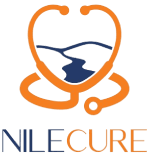
“No-Scalpel” vasectomy is a minimally invasive surgical procedure used for male sterilization, specifically for permanent contraception. Unlike traditional vasectomy techniques that involve making two small incisions in the scrotum to access the vas deferens (the tubes that carry sperm from the testicles), the “No-Scalpel” approach utilizes a special instrument to puncture the skin of the scrotum, allowing access to the vas deferens without the need for incisions.
Here’s an overview of the “No-Scalpel” vasectomy procedure:
1. Preparation: Before the procedure, the patient may receive local anesthesia to numb the scrotum and minimize discomfort during the procedure. It’s essential to discuss any concerns or questions with the healthcare provider beforehand and follow any pre-operative instructions provided.
2. Accessing the Vas Deferens: During the “No-Scalpel” vasectomy, the healthcare provider locates the vas deferens by gently feeling the scrotum. Once identified, a small puncture or opening is made in the skin of the scrotum using a specialized instrument called a ring clamp. This tool holds the vas deferens in place, making it easier to access without the need for incisions.
3. Severing and Sealing the Vas Deferens: After accessing the vas deferens, the healthcare provider carefully lifts it through the puncture and may use a small pair of forceps to hold it steady. The vas deferens is then severed or cut, and the ends may be sealed, clipped, or cauterized to prevent sperm from passing through. This disruption prevents sperm from reaching the semen, effectively rendering the individual sterile.
4. Closing the Puncture Site: Once the vas deferens are cut and sealed, the small puncture in the scrotum may be closed with dissolvable sutures or allowed to heal naturally. Because the procedure does not involve incisions, there is typically minimal bleeding, scarring, and post-operative pain compared to traditional vasectomy techniques.
5. Recovery and Follow-Up After the “No-Scalpel” vasectomy, patients are usually able to resume normal activities within a few days, although strenuous exercise and heavy lifting should be avoided for a short period. It’s essential to follow any post-operative care instructions provided by the healthcare provider, including keeping the surgical site clean and dry and avoiding sexual activity or ejaculation for a specified period to allow for proper healing. Follow-up appointments may be scheduled to ensure that the procedure was successful and to discuss any concerns or questions.
“No-Scalpel” vasectomy offers a safe, effective, and minimally invasive option for male sterilization, with a lower risk of complications and quicker recovery compared to traditional vasectomy methods. It provides a reliable form of contraception for individuals who have decided not to have children or have completed their desired family size. However, it’s essential to consult with a qualified healthcare provider to determine if “No-Scalpel” vasectomy is the right choice based on individual health considerations and reproductive goals.

